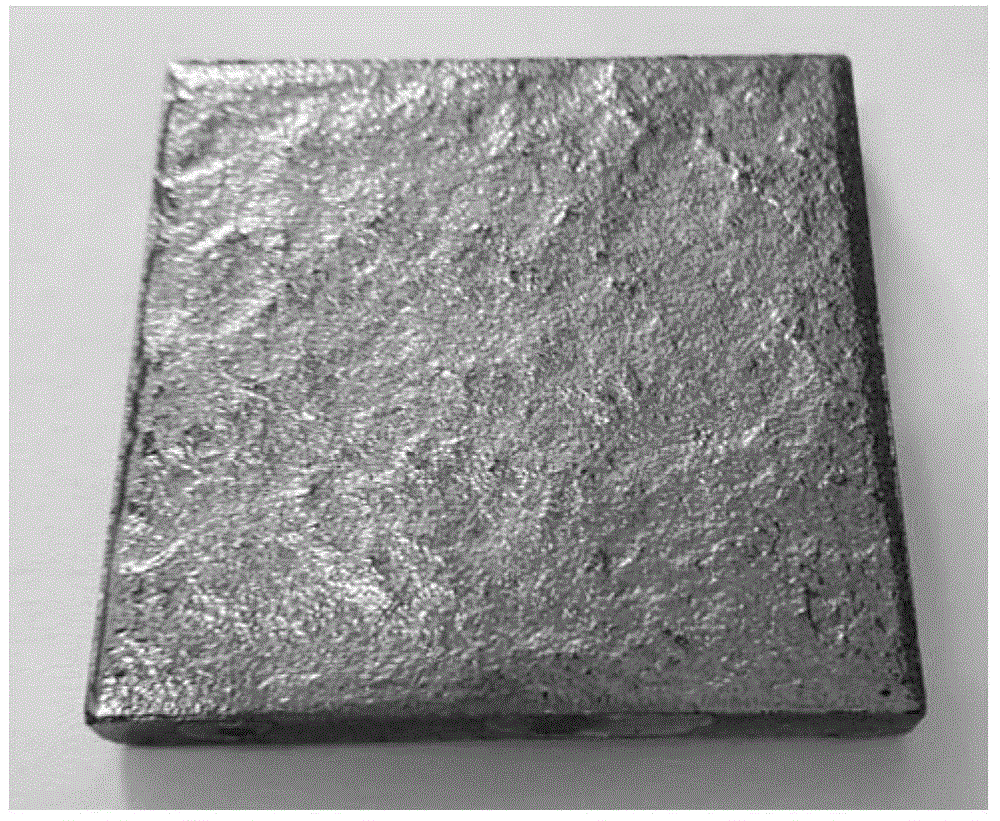Photocatalytic function ZrP2O7 microcrystalline opaque glaze composition and preparation method thereof
An opaque glaze and composition technology, applied in the field of ceramic materials, can solve the problems of few research reports, no reports, no reports on the application of photocatalytic materials, etc., and achieve simple operation, strong covering ability, and good opacity decoration effect. Effect
- Summary
- Abstract
- Description
- Claims
- Application Information
AI Technical Summary
Problems solved by technology
Method used
Image
Examples
preparation example Construction
[0029] The present invention adopts simple preparation method, can prepare the ZrP that can be widely used on the surface of traditional ceramics such as building sanitation and daily-use ceramics. 2 o 7 Microcrystalline opacifying glaze composition. The photocatalytic function ZrP that the present invention provides is illustrated below 2 o 7 A method for preparing a microcrystalline opacified glaze composition.
[0030]The present invention uses quartz, albite, potassium feldspar, spodumene, sodium phosphate, MgO, lithium carbonate, etc. as raw materials, and distributes SiO according to the following mass chemical composition 2 :Al 2 o 3 :P 2 o 5 :MgO:Li 2 O: Na 2 O:K 2 O=(12-16):(2-4):(51-55):(2-4):(8-10):(8-10):(8-10) for batching.
[0031] Dry mix and grind the raw materials of the above powder A, and pass through a 40-60 sieve to obtain the mixture. Then put it into a crucible, and put the crucible into an electric furnace at 1280°C-1360°C for 30-40min. Aft...
Embodiment 1
[0039] Example 1: ZrP 2 o 7 The mass percentage is 7% photocatalytic functional ceramic opacity glaze
[0040] 1) First, mix quartz, albite, potassium feldspar, spodumene, sodium phosphate, MgO, and lithium carbonate raw materials according to the following mass chemical composition ratios. SiO 2 :Al 2 o 3 :P 2 o 5 :MgO:Li 2 O: Na 2 O:K 2 O=14:3:53:3:9:9:9;
[0041] 2) Dry-mix and grind the above-mentioned powders, pass through 40 sieves to obtain the mixture, put it into a crucible, put it in an electric furnace at 1320°C for 35 minutes, take it out and pour it into water to quench to make a frit. Take the frit out of the water, put it into a ball mill after drying, and grind it finely. The ratio of control material (frit): ball: water is 1:1:0.8. After grinding for 3 hours, pass through a 250-mesh sieve, and dry for later use. The powder is recorded as material A;
[0042] 3) ZrO 2 and NH 4 h 2 PO 4 Powder according to mass ratio ZrO 2 : NH 4 h 2 PO 4 : L...
Embodiment 2
[0046] Example 2: ZrP 2 o 7 The mass percentage is 8% photocatalytic functional ceramic opacity glaze
[0047] 1) First, mix quartz, albite, potassium feldspar, spodumene, sodium phosphate, MgO, and lithium carbonate raw materials according to the following mass chemical composition ratios. SiO 2 :Al 2 o 3 :P 2 o 5 :MgO:Li 2 O: Na 2 O:K 2 O=12:2:55:4:10:10:10;
[0048] 2) Dry mix and grind the above powders, pass through 40-60 sieves to obtain the mixture, put it into a crucible, put it into an electric furnace and keep it warm at 1280°C for 30min, take it out and pour it into water to quench to make a frit. Take the frit out of the water, put it into a ball mill after drying, and grind it finely. The ratio of control material (frit): ball: water is 1:1:0.8. After grinding for 2 hours, pass through a 250-mesh sieve and dry for later use. The powder is recorded as material A;
[0049] 3) ZrO 2 and NH 4 h 2 PO 4 Powder according to mass ratio ZrO 2 : NH 4 h 2 ...
PUM
| Property | Measurement | Unit |
|---|---|---|
| thickness | aaaaa | aaaaa |
Abstract
Description
Claims
Application Information
 Login to View More
Login to View More - R&D
- Intellectual Property
- Life Sciences
- Materials
- Tech Scout
- Unparalleled Data Quality
- Higher Quality Content
- 60% Fewer Hallucinations
Browse by: Latest US Patents, China's latest patents, Technical Efficacy Thesaurus, Application Domain, Technology Topic, Popular Technical Reports.
© 2025 PatSnap. All rights reserved.Legal|Privacy policy|Modern Slavery Act Transparency Statement|Sitemap|About US| Contact US: help@patsnap.com


